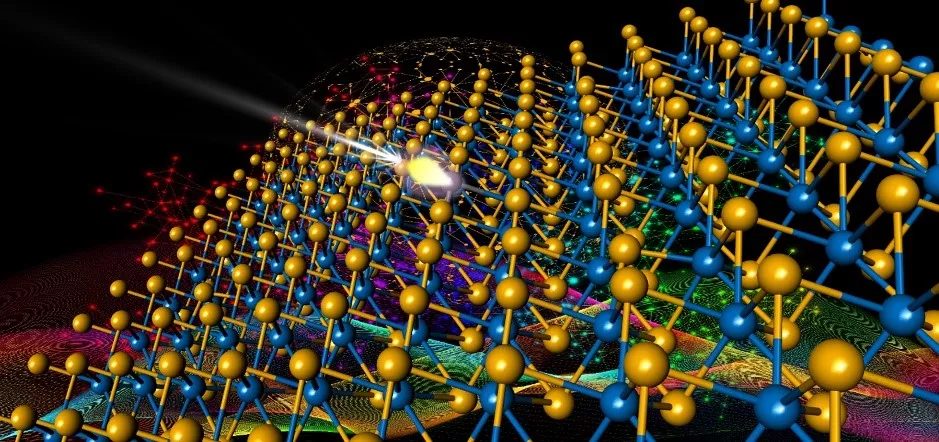In their latest research, led by Ádám Gali, experts from the Semiconductor Nanostructures Research Group at the ELKH Wigner Research Centre for Physics (Wigner RCP) have investigated the applicability of the carbon atom embedded in atomic-width tungsten disulfide as a qubit. Based on the findings published in the prestigious international journal Nature Communications, this neutrally charged phosphorescent carbon defect can be utilised as a qubit. The work of the research group contributes to the realization of multi-bit logic operations and quantum information systems with point errors produced in two-dimensional materials.
Quantum technology is a collective name for the methods and tools that can be used to achieve more accurate or faster results than classical solutions by using the basic phenomena of quantum mechanics in informatics, communication and measurement technology. The basic building blocks of these quantum systems are two-state systems known as qubits, or quantum bits. Researchers have already raised the possibility of using multiple quantum systems as qubits. Of these, semiconductor-embedded point defects seemed the most promising for operation at room temperature.

Spot defects are common molecular formations in crystals that can occur during or after crystal growth, such as by ion irradiation. This kind of operation has strict requirements, however, which means that not all point errors or host crystals are suitable for the physical implementation of qubit.
For the creation of efficient qubits, it is crucial for researchers to identify systems whose quantum states can be well initialized, manipulated, and read. This requires not only experimental knowledge of point defects at the atomic level and the generation of their structure, but also the detailed mapping of their electronic structure and magneto-optical properties. Recent advances in atomic-level simulations of point-embedded solid-state defects enable researchers to accurately describe these properties by calculations and to predict the applicability of new qubit types for a given purpose.
In a recent study by Adam Gali, a scientific advisor to Wigner RCP, researchers in the field of atomic precision fabrication of carbon substitution defects in atomic-thick tungsten disulfide, based on the latest findings obtained, the applicability of the neutral-charged carbon error as a quantum bit was systematically investigated. Calculations based on density functional theory found that the huge spin-orbit interaction characteristic of matter mixes excited states with each other, causing them to phosphorescence at telecommunication wavelengths, emitting coherent light in this two-dimensional material. Based on the findings of the researchers, this phosphorescent error can be utilised as a qubit, for which the appropriate quantum optical procedure has been specified, and the quantum protocol of scalable qubits has therefore been established, together with a telecommunication wavelength spin-photon interface. Compared to traditional three-dimensional materials, two-dimensional materials enable easy manipulation of point defects and can be integrated into other architectures. The work of the research group contributes to the implementation of multi-bit logic operations and quantum information systems with point errors generated in two-dimensional materials.